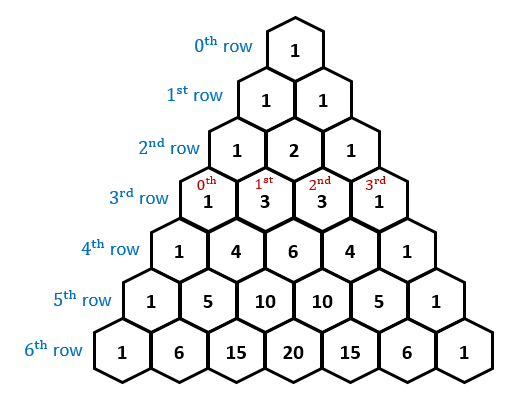We wish to expand
(1+x)(1+x)(1+x)(1+x)=(1+x)^4
Now, the Binomial Theorem states that it is possible to expand the sum of two numbers x and y raised to the power n into the form:
(x+y)^n = sum_(k=0)^n ((n),(k))x^ky^(n-k)
Where ((n),(k)) denotes the binomial coefficient, and is calculated by:
((n),(k))=(n!)/(k!(n-k)!)
If we substitute y=1 into the formula, we have:
(1+x)^n = sum_(k=0)^n ((n),(k)) x^k
In our particular case, n = 4, hence:
(1+x)^4 = sum_(k=0)^4 ((4),(k)) x^k=((4),(0))+((4),(1))x+...+((4),(4))x^4
All that is left to do is calculate ((4),(k)) for k=1,2,3 and 4.
{(((4),(0))=(4!)/(0!*4!)=24/(1*24)=1),(((4),(1))=(4!)/(1!*3!)=24/(1*6)=4),(((4),(2))=(4!)/(2!*2!)=24/(2*2)=6),(((4),(3))=(4!)/(3!*1!)=24/(6*1)=4),(((4),(4))=(4!)/(4!*0!) = 24/(24*1)=1) :}
Finally,
(1+x)^4 = 1+4x+6x^2+4x^3+x^4
For small n, calculating every ((n),(k)) explicitly is ok, but for larger values, it's tedious, because the factorial function rapidly increases.
Instead, we might use Pascal's triangle to makes things simpler. Here it is:
 useruploads.socratic.org)
useruploads.socratic.org)
This triangle is build up by adding; if we imagine near every 1 to be a 0 and if the element at the very top is 1, then the next row will have elements 0+1=1 and 1+0=1, because our top 1 has zeros to its right and left. Similarly, the second row values will be 0+1=1, 1+1=2, and 1+0=1.
To see more on Pascal's triangle, check this link.
Another property of this triangle is that the k-th element on the n-th row is equal to ((n),(k)). By this knowledge, we can easily judge that
(1+x)^4 = 1+4x+6x^2+4x^3+x^4
Here's a visual representation.
![enter image source here]()
 useruploads.socratic.org)
useruploads.socratic.org)

